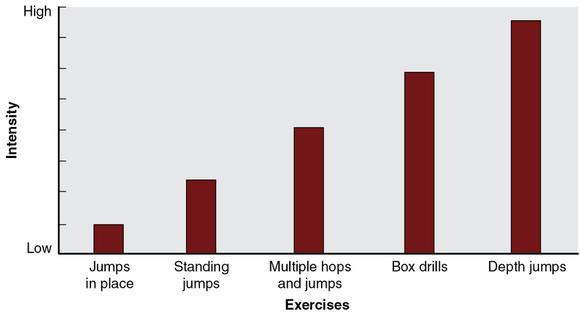Power Development
This is an excerpt from Soccer Science by Tony Strudwick.
A player's capability to generate power is a key goal of many training programmes to improve the performance of explosive movements on the pitch. Training strategies encompassing the force-velocity continuum (figure 12.3) can be used to improve lower-body power in the soccer environment.
Developing Power Through Strength
Numerous studies have reported relationships between relative strength, vertical jump power, speed and ability to change direction. In athletes who have done relatively little resistance training, increasing strength through a strength programme may provide both strength and power benefits. This type of approach would be beneficial to a younger player embarking on a long-term periodized strength and power programme or a player playing a highly regimented playing schedule with fixtures known well in advance.
Developing Power Through Strength Speed
Strength speed is defined as the ability to execute a movement quickly against a relatively large external resistance (typically greater than 30 per cent of 1RM). Exercises commonly performed in this category are Olympic lifts and their derivatives. Several factors go into the decision to use Olympic lifts or their derivatives with soccer players, including the player's age, resistance-training background, training priorities and time that can be devoted to learning technique. When Olympic lifts are used, they should be performed from the hang position because this skill is technically easier to master, yet the second pull phase produces the greatest amount of power during the lift, so the player receives a large benefit for effort. The value of Olympic lifting derivatives in athletic performance gives further credence to the support for technique development work during a soccer player's formative years.
Developing Power Through Speed Strength
Speed strength is defined as the ability to execute a movement quickly against a relatively small external resistance (typically less than 30 per cent of 1RM). Exercises commonly performed in resistance programmes in this category are squat jumps, loaded bilateral and unilateral countermovement jumps, resisted sprints and medicine ball power exercises. Both strength speed and speed strength exercises are known to increase the ability of an athlete to develop force quickly (rate of force development), an important characteristic to develop for soccer actions such as sprinting, jumping and changing direction, in which ground contact times are short.
Developing Power Through Speed
Plyometric exercises such as repetitive jumping, hopping, bounding and depth jumps have repeatedly been shown to increase power performance in athletes, in which the emphasis is on attempting to jump or move as high or far as possible with minimal ground contact time. Care must be taken to start plyometric exercise safely and progress volume and intensity sensibly, beginning with having the athlete demonstrate the ability to land and develop eccentric contraction.
This phase is particularly important for female soccer players because they suffer more ACL injuries than male players do when cutting and landing from jumps in noncontact situations. Furthermore, neuromuscular jump-landing training with correct coaching has been shown to cause a dramatic reduction in the risk of injury occurrence in this population.
A classification of plyometric exercise intensity is shown in figure 12.4. Players who are joint compromised should not use high-intensity plyometric exercises, but plyometric activity for those players can be performed in the swimming pool environment to reduce body load while still emphasizing minimal ground contact metrics.

A classification of the intensity of plyometric exercises.
Combination Power Programmes
The type of power programme that a player is prescribed depends on many factors together with his or her performance assessment profile. For example, an adult player identified as having a large window of adaptation for a certain component (e.g., unloaded power) will be provided with exercises that encompass the velocity end (speed strength and speed) of the force-velocity continuum, whereas a player identified as having a loaded power weakness will be prescribed both strength speed and speed strength exercises as appropriate. Players who need to improve all aspects of power may be prescribed three-way combination power programmes, in which a strength speed exercise is followed by a speed strength exercise and then a plyometric exercise, performed as a cluster set. Table 12.14 provides an example of leg power programmes to develop both bilateral and unilateral leg power in adult players.

Learn more about Soccer Science.
More Excerpts From Soccer ScienceSHOP

Get the latest insights with regular newsletters, plus periodic product information and special insider offers.
JOIN NOW


